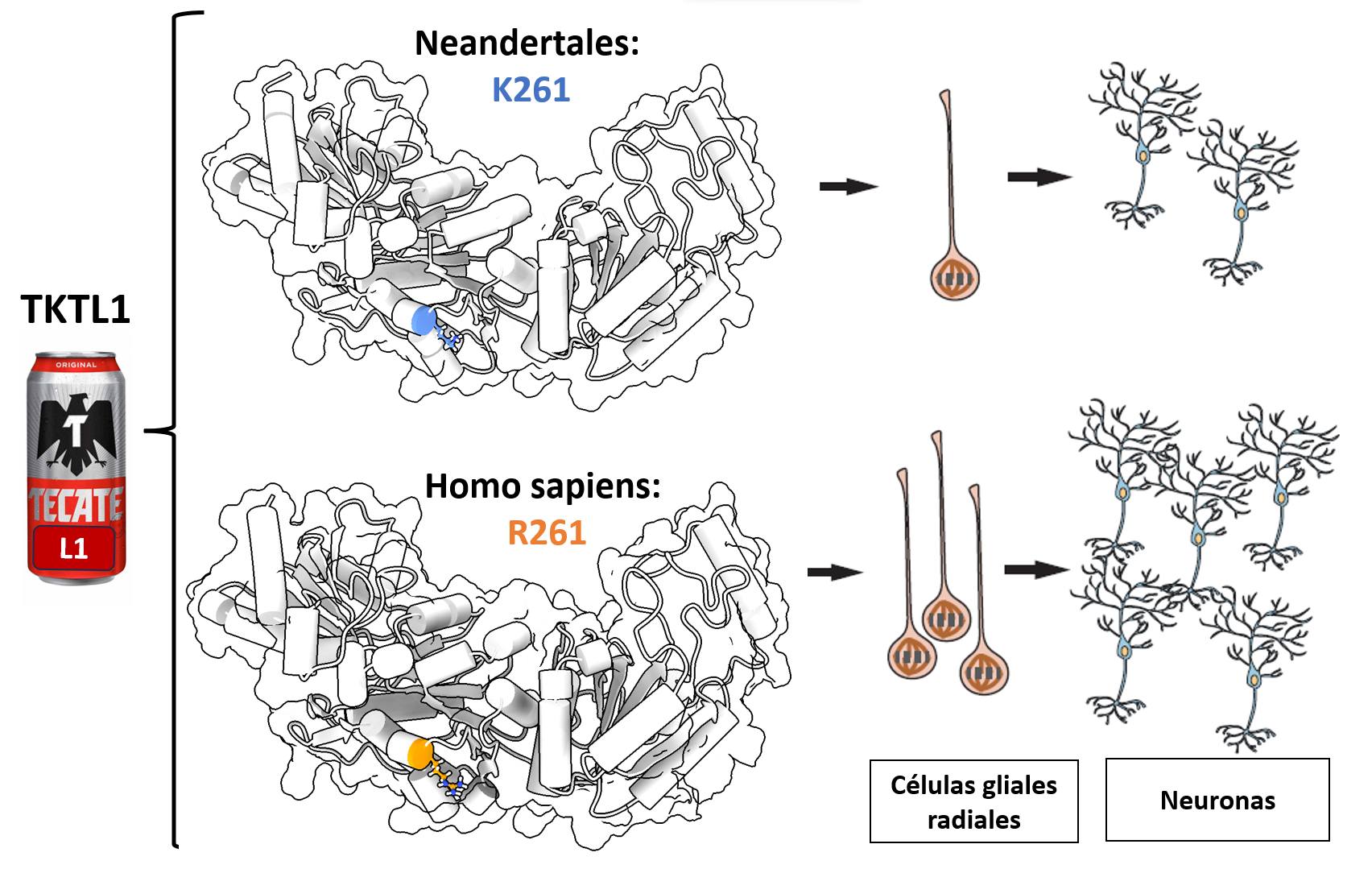Post 42: How a mutation can affect the evolution of the human brain 🧠
Published:
Today is Brain Day! 🧠 That’s why here’s something about one of its proteins.
The neocortex is a region of the brain involved in cognitive abilities (language, memory, perception, etc.). In the evolution of animals, the expansion of this region is usually associated with increased cognitive abilities. This expansion is attributed to radial glial cells, where a protein called TKTL1 is found.
If we compare the sequence of TKTL1 in us (Homo sapiens) against that of Neanderthals or Denisovans, it turns out that there is a mutation at residue 261 where we have an Arginine (R), while Neanderthals or Denisovans have a Lysine (K).
TKTL1 is a key enzyme in a metabolic pathway called the “Pentose Phosphate Pathway.” This pathway generates molecules that are widely used in metabolism and that eventually stimulate cell proliferation by synthesizing fatty acids used to build membranes. It is thought that this mutation in H. sapiens (K261R) resulted in an increase in the number of neurons generated during neurogenesis. This translates into a greater number of neuronal connections.
Is this mutation enough to explain the different cognitive abilities between modern and ancient humans? No. Interestingly, 87 proteins with single-residue mutations have been identified between modern and ancient humans, several of which are involved in processes related to neurogenesis. It is difficult to explain the evolution of a particular characteristic (in this case, the neocortex) solely from a mutation. This is just one case of specific changes that shaped the modern human brain.

Refs:
